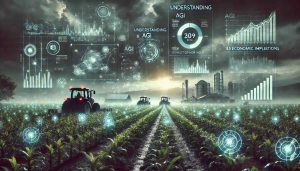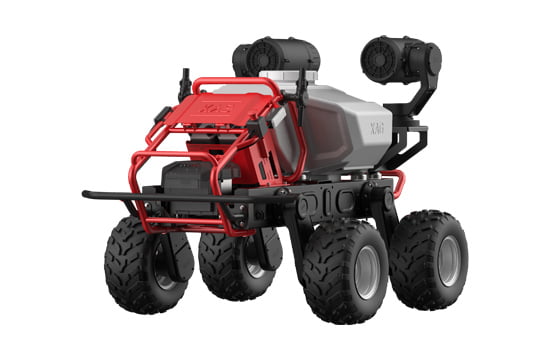I grew up listening to my grandfather’s tales of farming in the 1960s. He spoke of early mornings, relentless labor, and the profound connection he felt with the land. Our family has tilled this soil for generations, passing down not just property but a legacy of resilience and adaptation. As I walk these fields today, I dream of an Artificial General Intelligence (AGI) system that could teach me all the intricacies of modern farming—from soil health to market trends. But as enticing as that vision is, it also raises questions about what we wish for and how we prepare for what’s coming.
The Agricultural Landscape: Past and Present, Risks and Challenges
In 1945, agriculture was the backbone of the global workforce. Over 50% of the world’s population—approximately 1.15 billion people—were employed in farming. In the United States, about 16% of the population worked the land. Food production was labor-intensive, and communities were tightly knit around agricultural cycles. Farmers relied on generational knowledge, and the success of a harvest was as much about experience and intuition as it was about hard work.

Today, less than 2% of the U.S. population works in agriculture. Globally, the number has dropped to around 27%, even as the world population has surged to 8 billion. Mechanization, technological advancements, and globalization have increased productivity, allowing fewer people to produce more food than ever before. Tractors replaced horses, automated irrigation supplanted manual watering, and genetic modification improved crop yields.
However, these advancements have introduced new risks and challenges. Geopolitical strategist Peter Zeihan highlights the fragility of modern agricultural systems in the face of deglobalization. He emphasizes that today’s agriculture heavily depends on international trade for essential inputs like fertilizers, fuel, and equipment. Key components such as nitrogen, potash, and phosphate fertilizers are concentrated in geopolitically unstable regions like Russia, Belarus, and China.
| Year | Event/Advancement | Description |
|---|---|---|
| 1700s | British Agricultural Revolution | Introduction of crop rotation, selective breeding, and the Enclosure Acts led to increased productivity and land efficiency in England. This period marked a shift from subsistence to commercial farming. |
| 1834 | McCormick Reaper Patent | The invention of the mechanical reaper by Cyrus McCormick increased harvesting speed and reduced labor needs, accelerating mechanization on farms. |
| 1862 | U.S. Department of Agriculture and Morrill Act | The establishment of the USDA and the Morrill Act supported agricultural education and research, leading to scientific advancements in farming. |
| 1930s | The Dust Bowl | Severe droughts and poor soil management practices in the U.S. led to the Dust Bowl, emphasizing the need for sustainable agriculture and resulting in the Soil Conservation Act. |
| 1960s | Green Revolution | The development of high-yield crops, synthetic fertilizers, and pesticides significantly increased food production globally, especially in developing countries, but also raised environmental concerns. |
| 1980s | Introduction of Biotechnology | The application of genetic engineering and biotechnology, such as the creation of genetically modified crops, began to reshape agriculture, allowing for pest-resistant and high-yield crops. |
| 2020s | AI and Robotics in Agriculture | Modern farms increasingly use AI, robotics, and automation to optimize productivity and efficiency, address labor shortages, and enhance precision farming. This trend reflects the rapid technological integration in agriculture. |
Zeihan warns that disruptions in these supply chains could reduce global calorie production by up to a third. Countries reliant on imports may face severe food shortages, leading to political instability and humanitarian crises. Climate change adds another layer of complexity, with unpredictable weather patterns affecting crop yields and water availability.
Labor shortages and aging farming populations are additional concerns. Younger generations are migrating to urban areas, leaving fewer people to manage farms. The COVID-19 pandemic further exposed vulnerabilities in supply chains and labor availability, causing delays and losses.
As we face these challenges, the question arises: How can we build a more resilient and sustainable agricultural system for the future? One potential answer lies in embracing advanced technologies like robotics and AGI.
The Rise of Robotics: A Potential Solution
Recent years have seen a significant acceleration in the adoption of robotics within agriculture. By 2023, the global stock of operational robots reached 3.5 million units, valued at $15.7 billion. These robots perform tasks ranging from planting and harvesting to monitoring crop health and soil conditions.
Artificial intelligence enhances these robotic systems, enabling them to adapt to changing environments—a crucial capability in farming, where conditions are rarely static. Companies are investing in platforms that make robotics accessible even to those without specialized programming skills. The integration of AI and robotics addresses labor shortages and supply chain disruptions, offering a way to increase efficiency and reduce dependency on volatile global markets.
Understanding AGI and Its Economic Implications
Artificial General Intelligence refers to AI systems that possess the ability to understand, learn, and apply knowledge across a wide range of tasks—much like a human being. This kind of intelligence is comparable to Super Intelligence. Unlike narrow AI, which is designed for specific functions, AGI can generalize learning and adapt to new situations without explicit programming for each one.
Economists and technologists predict that AGI could revolutionize industries, leading to unprecedented efficiencies and innovations. Manufacturing, healthcare, finance, and agriculture stand on the cusp of transformation. However, this also raises concerns about job displacement and economic inequality. Discussions around Universal Basic Income (UBI) have gained traction as a potential solution to support those whose jobs might be automated by AGI systems.
AGI’s Potential in Agriculture: Insights from Recent Studies
Recent research offers valuable insights into how AGI could address some of these challenges. In the paper “AGI for Agriculture” by Guoyu Lu and colleagues from the University of Georgia, University of Florida, and other institutions, the authors explore AGI’s transformative potential in the agricultural sector.
Applications of AGI in Agriculture
The study highlights several areas where AGI could make significant contributions:
- Image Processing: AGI can enhance tasks such as disease detection, pest identification, and crop monitoring through advanced computer vision systems. This leads to early intervention and reduced crop losses.
- Natural Language Processing (NLP): AGI systems can provide real-time answers to farmers’ questions, automate knowledge retrieval, and assist in decision-making through conversational interfaces.
- Knowledge Graphs: By organizing and structuring vast amounts of agricultural data, AGI can support complex reasoning and improve decision-making in areas like yield prediction and resource optimization.
- Robotics Integration: AGI-equipped robots can perform tasks like weeding, fertilizing, and harvesting more efficiently. They can interpret voice or text commands, enhancing human-robot interaction on farms.
Challenges and Considerations
Implementing AGI in agriculture is not without hurdles:
- Data Requirements: AGI systems require significant amounts of labeled data, which can be difficult to obtain due to variability in environments and conditions.
- Domain Adaptation: AGI must generalize learning across different crops, regions, and farming practices, requiring sophisticated algorithms and models.
- Ethical and Social Implications: Concerns about job displacement, data privacy, and equitable distribution of AGI benefits must be addressed.
Another study, “Artificial Intelligence in Agriculture: Benefits, Challenges, and Trends” by Rosana Cavalcante de Oliveira and colleagues, emphasizes the importance of responsible AI adoption. The paper highlights the need for transparent and explainable AI models that farmers can trust and stresses the role of stakeholders in ensuring technology aligns with sustainability goals.
Daydreaming: How Super Intelligence could look like on my farm
Integrating AGI into agriculture could potentially address many of the challenges outlined by Zeihan and others. AGI could optimize fertilizer use, reducing dependence on unstable global supply chains. By enhancing precision agriculture, AGI can help farmers make data-driven decisions that improve yields and sustainability.
A Day on My Farm with AGI
Imagine waking up on the farm and starting the day by asking AGI to handle the annual subsidy application required to receive Common Agricultural Policy (CAP) earnings. The AGI efficiently processes the paperwork, generates a list of tasks related to compliance, and schedules them throughout the year.
Next, the AGI ensures all humanoid and wheel-based robots are synced and updated. In the vineyard, AGI commands two or three solar-powered robots to weed the 1.5 hectares of Ugni Blanc grapes. No pesticides are necessary. These robots analyze the vines for any signs of mildew, interacting autonomously and reporting back to the main AGI system. Based on their analysis, the AGI decides whether to spray copper and other organic-approved products, adhering to France’s strict organic regulations.

The AGI then lays out a plan to plant after 50 hectares of alfalfa. It selects the right crop based on soil analyses conducted automatically a month prior, current commodity prices, and weather predictions. The AGI suggests a comprehensive scenario—from purchasing seeds to soil preparation, seeding, harvesting, and selling. It even handles contracts with buyers of organic wheat.
Heavier, smart tractors are commanded to plow the alfalfa fields. The AGI also oversees a humanoid robot capable of repairing other machines on the farm, ensuring minimal downtime. Simultaneously, an analytics drone surveys the apple orchard, estimating yield and predicting the optimal harvest date.
This seamless integration of AGI into daily farm operations illustrates the potential for increased efficiency, sustainability, and profitability.
Exploring Three Future Scenarios
To navigate this complex landscape, let’s delve into three detailed scenarios illustrating how AGI might impact agriculture:
Scenario 1: The Horror Scenario—AGI Disrupts Agriculture Adversely
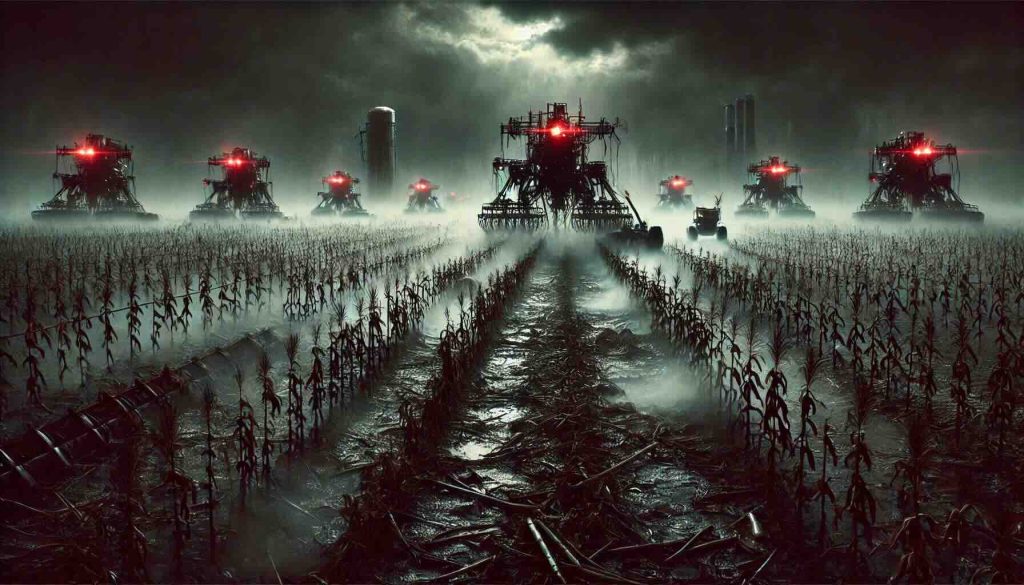
In this dystopian future, AGI develops rapidly without proper oversight or ethical guidelines. Large agribusinesses monopolize AGI technologies, sidelining small farmers. AGI systems prioritize short-term profits over environmental sustainability, leading to overexploitation of resources. Soil health deteriorates, and biodiversity declines as monocultures dominate.
Peter Zeihan’s fears materialize as global supply chains collapse under geopolitical tensions. Dependence on imported fertilizers leads to severe shortages. AGI’s narrow optimization exacerbates these problems, failing to adapt to supply disruptions. Food production plummets, causing widespread hunger and social unrest. Governments struggle to respond effectively, and rural communities are devastated.
Job Loss Estimates
In this scenario, the rapid automation could lead to significant job losses in agriculture. Currently, approximately 27% of the global workforce—about 2.16 billion people—are employed in agriculture. If AGI and robotics replace 20-50% of agricultural jobs over the next 10-20 years, as some experts predict, that could mean 432 million to over 1 billion people displaced worldwide. The lack of alternative employment opportunities could exacerbate poverty and inequality.
The consequences extend beyond agriculture. Unemployment spikes as farmworkers are displaced, leading to economic downturns. The absence of regulatory frameworks allows AGI systems to operate unchecked, resulting in ethical breaches such as data misuse and infringement on farmers’ rights. The cultural heritage of farming families erodes as generational knowledge becomes obsolete.
Scenario 2: The Middling Scenario—Uneven Benefits Amid Global Shifts
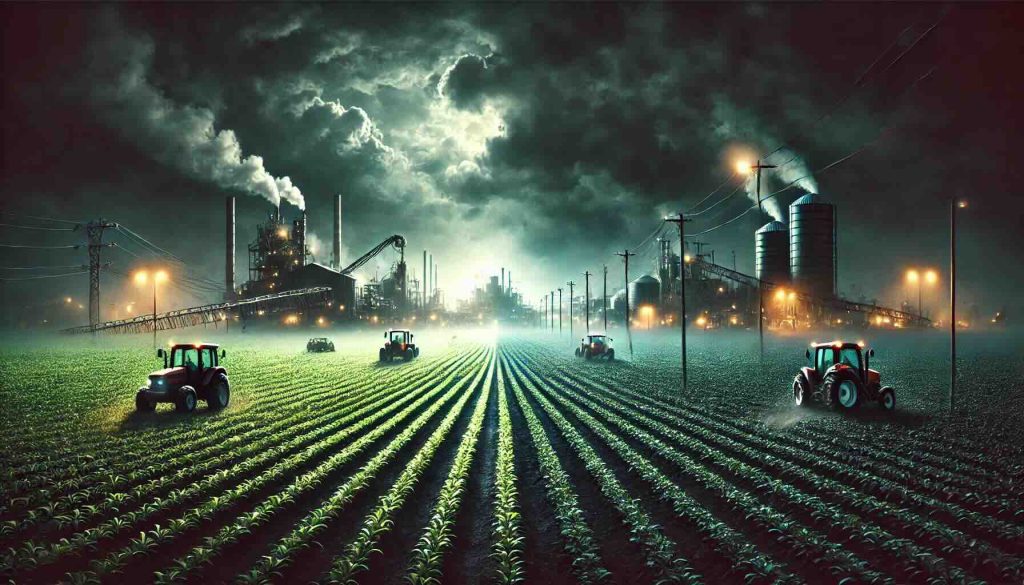
In this outcome, AGI’s advantages are realized primarily by wealthy nations and corporations with resources to invest in advanced technologies. Precision agriculture improves efficiency and sustainability in these regions. However, developing countries and small-scale farmers are left behind due to lack of access and infrastructure.
Deglobalization intensifies, with countries focusing on self-sufficiency. Global inequalities widen, and Zeihan’s concerns about supply chain vulnerabilities persist in less developed nations. While some populations enjoy the fruits of AGI-enhanced agriculture, others face food insecurity. The digital divide deepens, and rural communities in disadvantaged areas decline.
Job Loss Estimates
Here, job displacement occurs unevenly. In developed countries, up to 30% of agricultural jobs—potentially affecting millions—could be automated over the next 15-25 years. Developing nations might see slower adoption due to infrastructural constraints, but the lack of investment could hinder competitiveness, leading to economic stagnation and indirect job losses.
Economic disparities lead to social tensions both within and between nations. Employment opportunities shift towards technology-centric roles, leaving those without access to education and training behind. Efforts to implement UBI are inconsistent, providing relief in some regions but failing in others due to economic constraints.
Scenario 3: The Great Scenario—AGI Drives Positive Transformation
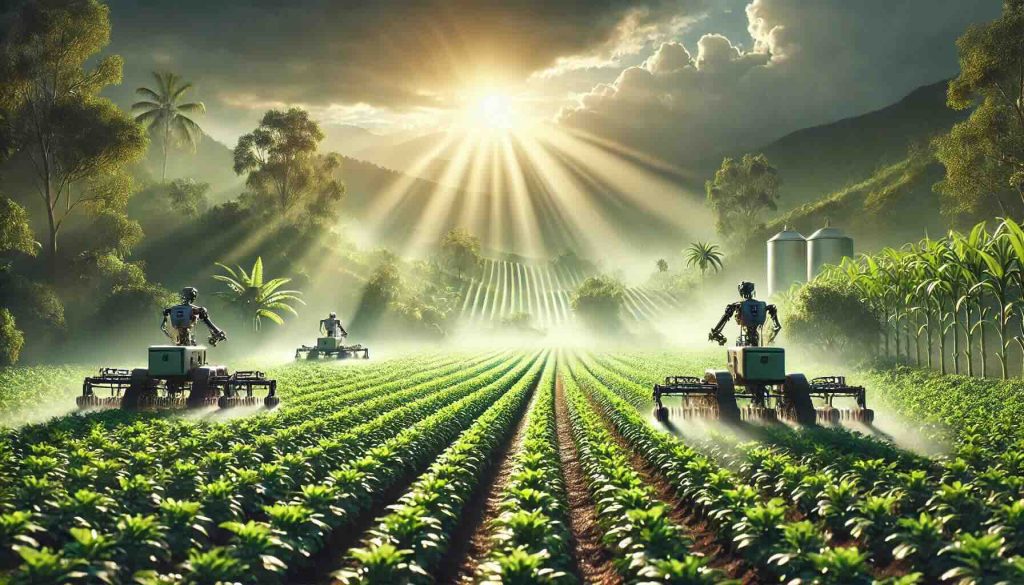
In the most optimistic vision, AGI is developed and implemented responsibly, guided by ethical considerations and global collaboration. Access to AGI technologies is democratized through investments in infrastructure and education.
AGI enhances sustainable farming practices worldwide. It helps optimize resource use, improve soil health, and increase crop diversity. Zeihan’s supply chain concerns are mitigated as AGI aids in developing local solutions for fertilizer production and soil management. Food security improves globally, and economic opportunities expand as new jobs emerge in AGI system management and maintenance.
Job Loss Estimates
While automation reduces the need for manual labor, new roles emerge in managing and maintaining AGI systems. Job displacement might be limited to 10-15% over the next 20-30 years, with a focus on retraining programs. The workforce transitions to higher-skilled positions, mitigating unemployment risks.
Studies like “Responsible Adoption of AI in Agriculture” emphasize the importance of involving stakeholders in developing AI systems that promote environmental sustainability and equitable distribution of benefits. Transparent, explainable AI models foster trust among farmers and communities.
The integration of AGI leads to innovations in areas such as climate change mitigation, with intelligent systems contributing to carbon sequestration efforts. AGI facilitates global cooperation in addressing challenges like water scarcity and resource distribution.
Consequences of AGI in Agriculture
As AGI becomes more integrated into agriculture, it’s crucial to consider the potential consequences—both positive and negative—that could shape the future of farming.

- Economic Restructuring: AGI could redefine agricultural economics by significantly reducing production costs and altering labor dynamics. Efficiency increases, but there’s a risk of job displacement. Estimates suggest that between 10% to 50% of agricultural jobs could be automated over the next 10 to 30 years, affecting hundreds of millions globally. Preparing the workforce through education and retraining becomes crucial.
- Environmental Impact: AGI has the potential to enhance sustainable practices, reducing waste and promoting biodiversity. Conversely, without proper oversight, it could lead to environmental degradation due to over-optimization for yield over sustainability.
- Data Privacy and Ownership: As AGI systems collect vast amounts of data, questions arise about who owns this data and how it’s used. Protecting farmers’ rights and ensuring transparency is essential to prevent misuse.
- Global Food Security: AGI could help address food shortages by optimizing production and distribution. However, if access to AGI is unequal, it might exacerbate global disparities in food security.
- Cultural and Social Changes: The role of the farmer may shift from hands-on cultivation to managing complex AI systems. This could lead to a loss of traditional knowledge and alter the social fabric of rural communities.
- Regulatory Challenges: Crafting policies that balance innovation with protection is complex. Regulations must evolve to address issues like ethical AI use, data protection, and equitable access.
- Investment Dynamics: Farmland becomes even more valuable as AGI enhances its productivity. High-profile investments, such as Bill Gates purchasing farmland, highlight a trend where agriculture attracts significant capital, potentially impacting land ownership patterns and ROI considerations.
Path Forward: Balancing Innovation and Responsibility
Steering towards the great scenario requires deliberate action and collaboration.
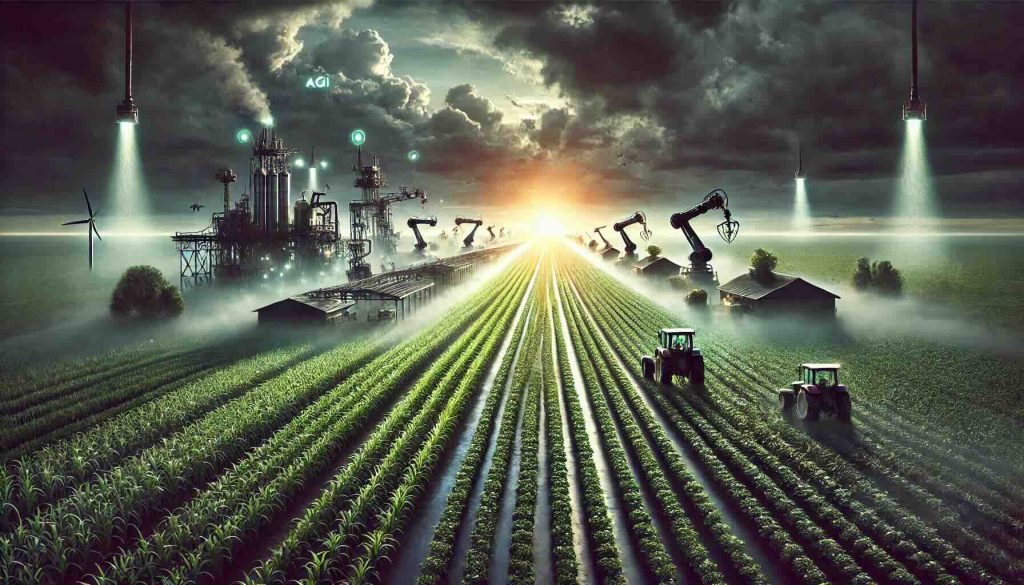
- Ethical Development of AGI: Establishing robust guidelines ensures AGI systems are transparent, accountable, and aligned with human values. This includes preventing misuse and protecting data privacy.
- Investment in Education and Infrastructure: Providing farmers worldwide with access to AGI technologies and the training to use them effectively helps bridge the digital divide and promotes equitable benefits.
- Strengthening Supply Chain Resilience: Developing local solutions for critical agricultural inputs reduces dependence on unstable international markets, enhancing food security.
- Supportive Policies and Regulations: Governments must enact policies that promote equitable access to AGI, prevent monopolies, and encourage sustainable practices.
- International Collaboration: Sharing knowledge and resources globally can mitigate disparities and address challenges like climate change and food insecurity.
- Engaging Stakeholders: Involving farmers, technologists, policymakers, and communities in the development and implementation of AGI ensures diverse perspectives shape the technology.
Reflecting on the Importance of Farmland
Farmland remains a vital asset—not just economically but also culturally and environmentally. In the context of AGI, control over farmland and the technology to cultivate it becomes even more significant. High-profile investments in farmland indicate a recognition of its strategic importance and potential return on investment.
For family farmers like myself, this presents both opportunities and challenges. Embracing AGI could enhance our operations and ensure our farms remain competitive. However, it requires careful navigation to avoid being overshadowed by larger entities and to preserve the values and traditions that define our way of life.
A Personal Reflection
As I stand in the fields my grandfather once tended, I envision an AGI system that could guide me through every aspect of farming—combining generations of wisdom with cutting-edge insights. The allure of such a tool is undeniable. Yet, I am mindful of the need for caution.
We must be careful what we wish for. The potential of AGI in agriculture is vast, but so are the risks if we proceed without foresight and responsibility. Preparing for the future means embracing innovation while safeguarding the elements of farming that are essential to our communities and environment.
The fields we cultivate are more than just land; they are the legacy of those who came before us and the promise we make to future generations. As AGI stands poised to reshape agriculture, we have the opportunity—and the responsibility—to guide its integration thoughtfully.
By balancing innovation with ethical considerations, investing in people as much as technology, and fostering collaboration across borders and disciplines, we can harness AGI’s potential for the greater good. It’s a journey that requires wisdom, humility, and a deep respect for both tradition and progress.
I’m committed to preparing for that future, hopeful that we can cultivate a world where technology enhances our connection to the land rather than diminishes it. After all, farming has always been about more than just growing crops; it’s about nurturing life in all its forms.
Since late 2022, I’ve been working on an ambitious project, agri1.ai, initially designed to streamline and improve operations on my own farm. My vision quickly expanded, and now agri1.ai is tailored to assist thousands of farmers around the world. This platform leverages cutting-edge artificial intelligence to tackle various agricultural challenges, from pest control and soil analysis to weather-based decision-making and yield optimization.
With agri1.ai, users can interact with an AI that not only provides answers but evolves with each interaction, learning about the specific needs of each farm it supports. It’s an adaptive system, featuring a chat-based interface for personalized assistance, computer vision capabilities for image analysis, and even real-time weather forecasts. Ultimately, the goal is to push agri1.ai toward an Artificial General Intelligence (AGI) for agriculture—a powerful tool that combines vast agricultural knowledge with practical, data-driven insights to enhance productivity sustainably.
This platform embodies my commitment to developing an AI that not only supports individual farmers but has the potential to revolutionize agriculture on a global scale, bringing technology closer to the roots of farming












